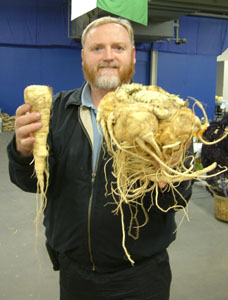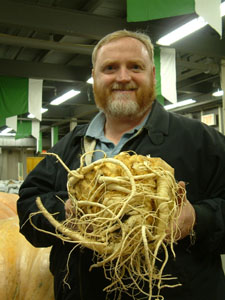|
2006
Essentials for Travellers
Okanagan Fall Wine Festival 2007 Okanagan Summer Wine Festival 2007 International Wine Events in 2007 Vancouver Playhouse International Wine Festival 2007 Okanagan Fall Wine Festival 2006 Sonoma County Showcase of Wine & Food 2006 International Wine Events in 2006 Recently Recommended Vintage Destinations Travel Books Madrid Fusion IV ~ Spanish Wines Take Flight Prince Edward County's Field of Dreams Long Dog Winery - No Long Shot! Vancouver Playhouse International Wine Festival 2005 Chicago Treasures from Art to Wine New Zealand: A Taste of Things to Come TimeOutToronto ~ The Triplets of Belleville Arizona Wineries The Lowdown on Lodi ~North America’s most exciting viticultural area International Wine Events in 2004 World's Largest Parsnip ~ Royal Winter Fair 2003 Uxbridge Celebration of the Arts 2003 Myths and Legends of the World Michelin Three Star Chef at Wildfire Restaurant at Taboo Best Vintage Destinations ~ Top Spots for 2002-2003 The Shiraz Rush is On! ~ South Africa's Hottest Grape IFOAM 2002 Organic World Congress 2002 Miami Art Highlight - Roy Lichtenstein: Inside/Outside New Horizons for Ontario’s Culinary Wine Tourism© New Zealand ~ A New Culinary Cornucopia
|
World’s Largest Parsnip November 7, 2003 It
is a scary thing - hairy, big and ugly. Show this giant parsnip to anyone
and they are likely to run away and swear off vegetables for life. But
beauty is in the eye of the beholder, and to Norman
Craven of Cannington, Ontario this new world record giant parsnip is a
wonderful thing. First, it is bound for the Guinness Book of World
Records. Weighing in at 8 lb 6 oz, it demolished the previous record
holder (a puny 5 lb 13 oz) and also was the big winner at the Royal
Agricultural Winter Fair which runs November 7-16.
Craven
who works at the Home Depot has been raising these giant vegetables in his
backyard since 1989. “It’s my
hobby.” He exclaims. “This
parsnip was raised on a patch 3 feet by 3 feet and it took about an hour a
day of TLC from the time I moved it into the garden until harvested just
this week.” Craven
is no stranger to monster vegetables. He created Guinness world records
with his giant pumpkin in 1993 (836 lb.) and rutabagas in 1995 (56.3 lb.)
and 1996 (62.2 lb.). Having just received his fourth award, he is aiming
at challenging the worlds largest marrow (135 lb.) at next years’s
competition. You can catch Cravens parsnip and a variety of award-winning
vegetables (including the 1168 lb pumpkin) at the Fair until November 16
at Toronto's Exhibition Place. For more information on the Royal Agricultural Winter Fair go to www.royalfair.org PARSNIP
PRIMER
PARSNIP
Pastinaca sativa, an
umbelliferous plant which grows wild in Europe and W. Asia and has been
cultivated to produce an edible root. (The root of the wild parsnip is
small, woody, and inedible, but sweet and with a distinct parsnip aroma;
so it could originally have been used as a flavouring. Cultivation for
this purpose would have improved its size and led to edible forms.) The
earlier ancient writers did not distinguish between parsnips and CARROTS.
The first name for `parsnip was the Latin pastinaca;
but even as late as the 1st century AD Pliny the Elder was using this to
mean `carrot' as well. Later writings such as those of Apicius suggest
that the Romans cultivated parsnips, and held them in some esteem. The
English name `parsnip' comes, through French, from pastinaca
with the ending `nip' to indicate that it was like a turnip. In
medieval Europe there was a dearth of sweeteners; sugar was a rare,
imported luxury, and honey expensive. Moreover the potato, prolific source
of starch, had not yet arrived from America. So the sweet, starchy parsnip
was doubly useful and became a staple food. Besides being eaten as a
vegetable it could be used as an ingredient in sweet dishes. Dorothy
Hartley (1954) observes that parsnip has `the type of sweetness that
mingles with honey and spice, so that some boiled plum and marrowfat
puddings, flavoured with spice and sweetened with honey, were made with a
parsnip base'. As
sugar became more readily available and with the gradual introduction of
the potato, the standing of the parsnip in Europe waned. It is now eaten
mainly in N. Europe, to only a moderate extent in Britain, and hardly at
all in S. Europe. Nor has it gained much importance in other regions.
Consumption in the USA is small. One of the reasons for such a generally
halfhearted attitude is that the parsnip has a taste which, although not
strong, is peculiar and not to everyone's liking. Its oddly semisweet
quality makes it an awkward partner to other foods, although it goes very
well with salt cod, for example. Large, old parsnips can be woody; even
young ones tend to have a tough core which may be better discarded. The
parsnip is grown in colder climates, and is one of the few vegetables
which is positively improved by frost. The effect of freezing the living
root is to convert some of the starch into sugar. The plant can thus be
left in the ground until needed. Parsnips
of modern varieties grow to 20-40 cm (8-15") long, and need lengthy
cooking, although less than carrots. Most of the flavour lies directly
under the skin, so peeling is to be avoided. They may be cut into large
chunks, parboiled, and finished by baking or braising; or steamed and
mashed. Baking produces a crisp, brown, slightly caramelized outside which
is agreeable; and parsnip `chips' (US: French fries) are good.
|


